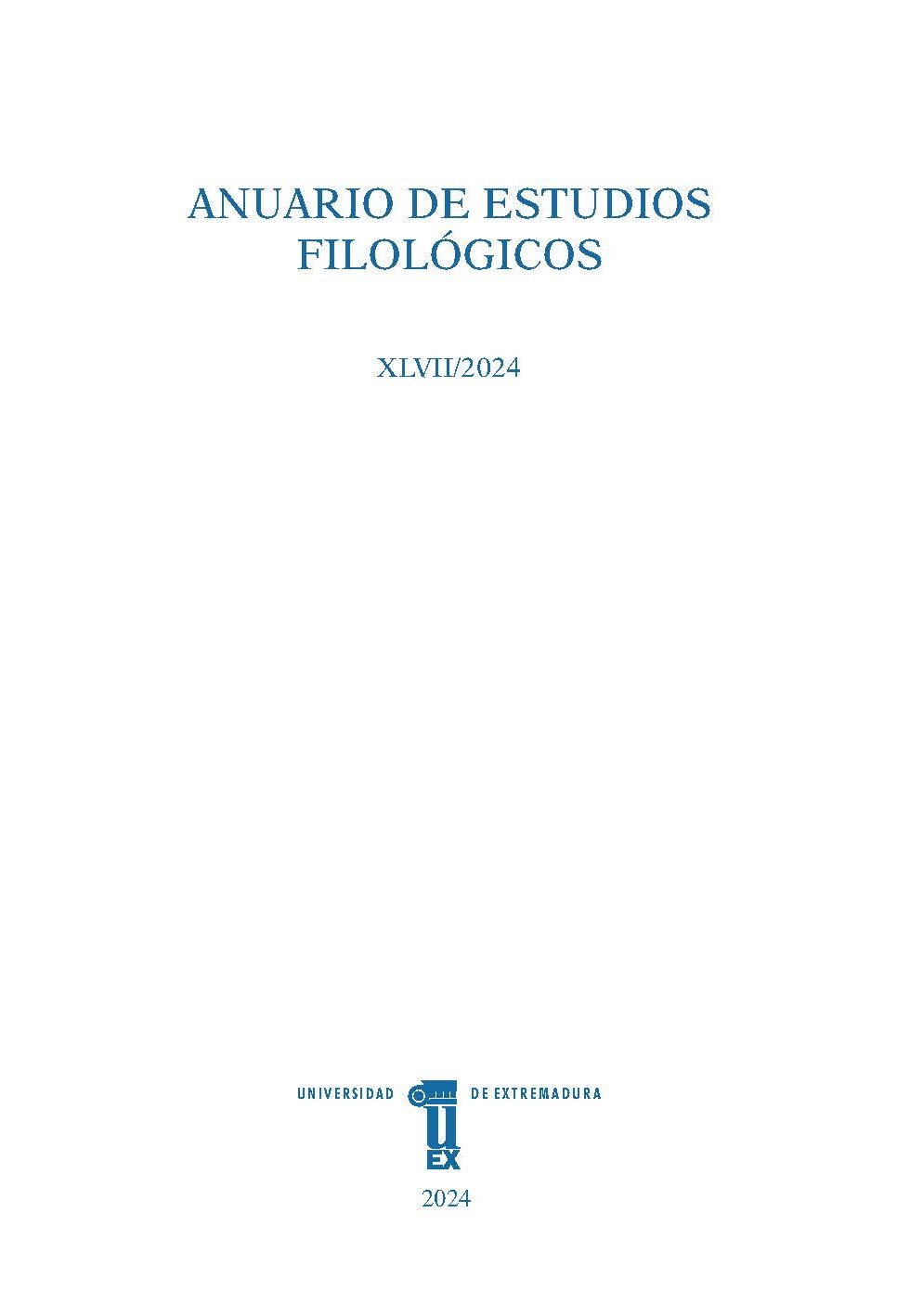Models of arguments in Murakami's narrative
DOI:
https://doi.org/10.17398/2660-7301.47.69Keywords:
contemporary novel, Haruki Murakami, narrative, Japanese literatureAbstract
The purpose of the work is to investigate Haruki Murakami's narrative in order to recognize, among its various arguments, models of thematic affinity and structural organization. The applied methodology is based on the postulates of the structuralist literary criticism (Todorov, Greimas) and it also incorporates the approach of relevant specialists (Seats, Strecher, Rubio) on the author. When considering a series of works, appreciable structural confluences are observed between them (novels and stories). The conclusions drawn allow us to affirm that the aforementioned works are built from common schemes, that is, two thematic and plot models are delimited.
Downloads
References
ANDERSON, Sam (2011): «The fierce imagination of Haruki Murakami». New York Times Magazine, 21 octubre (en línea: <https://www.nytimes.com/2011/10/23/magazine/the-fierce-imagination-of-haruki-murakami.html>, consulta: 17 de noviembre de 2023).
AYÉN, Xavi (2011): «Mi novela 1Q84 quiere describir todo lo que existe». La Vanguardia. Cultura, 11 junio (en línea: <https://www.lavanguardia.com/cultura/20110611/ 54167936309/mi-novela-1q84-quiere-describir-todo-lo-que-existe.html>, consulta: 17 de noviembre de 2023).
BREMOND, Claude (1966): «La logique des possibles narratifs». Communications, 8, 60-76.
BUCHANAN, Rowan Hisayo (2020): «Who You’re Reading When You Read Haruki Murakami». The Atlantic. Books, 11 septiembre (en línea: <https://amp.theatlantic.com/amp/article/616210/>, consulta: 17 de noviembre de 2023).
CASTELLÓN ALCALÁ, Heraclia (2022): «Sobre el ideario narrativo y el realismo fantástico de Haruki Murakami a partir de algunas obras», Argos, 9.24, 78-102 (https://doi.org/10.32870/argos.v9.n24.7b22).
CUBILLO PANIAGUA, Ruth (2013): «Metaficción e intertextualidad en la novela 1Q84 de Haruki Murakami». Revista de Lenguas Modernas, 18, 187-199.
GREIMAS, A.J. (1966): «Éléments pour une théorie de l’interpretation de récit mythique». Communications, 8, 28-59.
ROWLAND, Hazel (2019): «How Haruki Murakami Navigates Between Japanese and Western Cultures». Culture trip, 6 marzo (en línea: <https://theculturetrip.com/asia/japan/articles/japan-caught-between-cultures/>, consulta: 17 de noviembre de 2023).
RUBIO, Carlos (2012): El Japón de Murakami. Las señas de identidad del autor de Tokio Blues. Un viaje hacia el país que configura su universo. Madrid: Aguilar.
SASAMORI, Takefusa (1997): «Therapeutic Rituals Performed by Itako (Japanese Blind Female Shamans)». The World of Music, 39.1, 85-96.
SEATS, Michael (2006): Murakami Haruki: the Simulacrum in Contemporary Japanese Culture. Lanham: Lexington Books.
STRECHER, Mathew C. (1999): «Magical Realism and the Search for Identity in the Fiction of Murakami Haruki». Journal of Japanese Studies, 25.2, 263-298.
SUGIMOTO, Yoshio (2010): An introduction to Japanese society. Cambridge: CUP (3.ª ed.).
TODOROV, Tzvetan (1966): «Les categories du récit littéraire». Communications, 8, 125-151.



